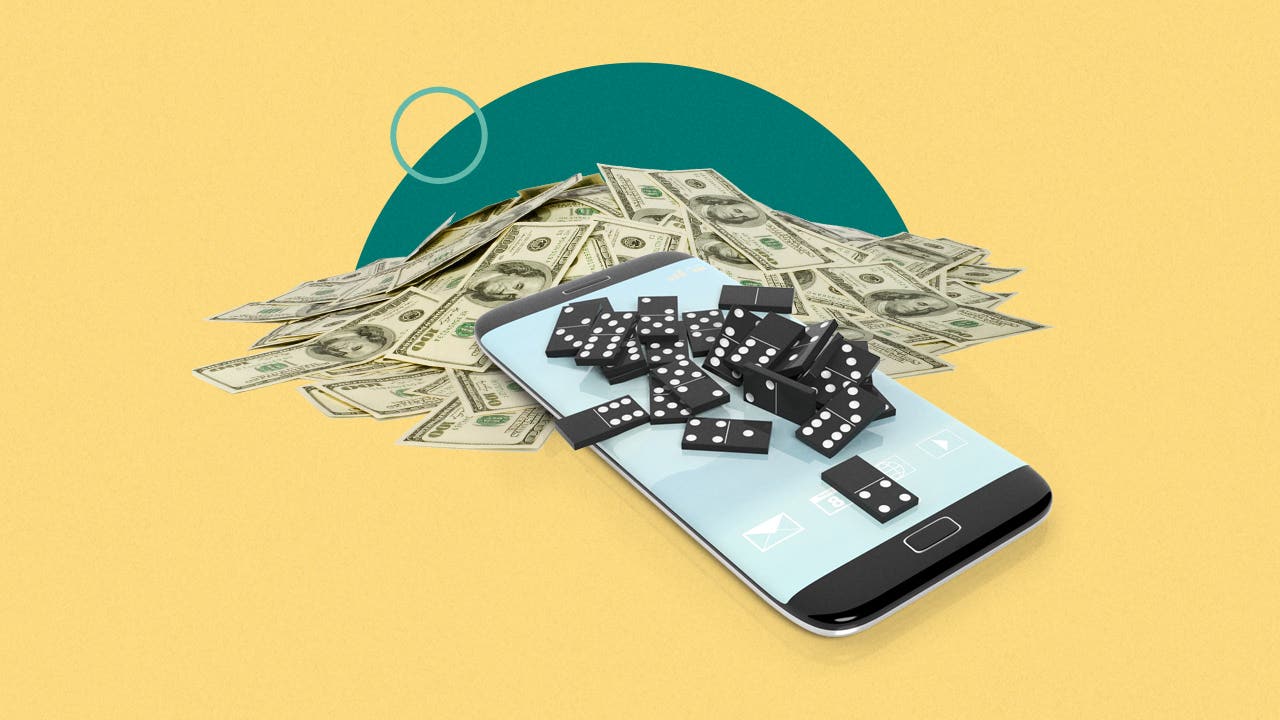5 fun ways gamification can help you save more

The Bankrate promise
At Bankrate we strive to help you make smarter financial decisions. While we adhere to strict , this post may contain references to products from our partners. Here's an explanation for .
The onset of digital banking came with an opportunity to fundamentally change the way we bank. One way financial firms have integrated digital features is through something called gamification, which uses game-like elements to incentivize healthy financial behavior.
As an example, consider the finance app Fortune City. Users of the app build a simulated city based on their spending. They log all of their daily expenses and income, with each expense being translated into an element of the city’s design, so that the user can see their budget visualized in the app and practice mindful spending.
Fortune City and apps similar to it create a game out of managing finances. As a result, consumers can engage with their finances in a more interactive format and become more conscious of their spending and saving habits.
What is gamification?
Gamification is a way of adding game-like elements (scoring, winning, competing with others) to some sort of non-game product or process. Businesses often use gamification in their marketing strategies and loyalty programs, and dozens of mobile apps have emerged to support these efforts. A number of banks and credit unions have tried using games to increase engagement or educate consumers about personal finance, too.
Most gamified products provide the user with some sort of objective — a final goal post they need to reach to win the game. Ultimately though, the power of gamification is in the reward. Whether it’s bragging rights that you beat a competitor, money or some sort of prize, dangling that carrot can help motivate consumers to “level-up,” or progress to the next level, keep achieving and, in the end, complete their goal.
Gamifying an objective can also help consumers better track their progress and stay on the path toward success by boosting consumers’ motivation. Studies have proven that “gamification can be a powerful solution to address motivational problems within learning or working contexts,” according to an article in the scholarly journal “Computers in Human Behavior.”
5 ways gamification can help you save
If met with a $1,000 emergency expense, only 43 percent of U.S. adults would be able to cover the cost with money from their savings, according to Bankrate’s 2023 emergency savings report. For consumers who are struggling to build savings, gamification may be able to help, motivating them to save and have fun while they’re at it.
1. Get rewarded for saving in real time
Unlike traditional budgeting — which takes time to yield results even as savings rates are high — a gamified experience instantly grants rewards for consumers.
“The main action that happens in a gamified system is that they tend to be very focused on providing people with immediate positive reinforcement that repeats with every action the user makes,” says Gabe Zichermann, an author and gamification expert.
Positive reinforcement works by rewarding and encouraging positive behavior, rather than punishing you for mistakes or bad habits.
When we experience something pleasurable, like winning a prize, our brains produce a chemical called dopamine. We’re hard-wired to prefer pleasure over pain, says Syble Solomon, a specialist in financial psychology and creator of Money Habitudes, an online game that gives insight into different money personalities. So naturally, we’re motivated to do what we find satisfying.
That could include, for example, earning rewards points as you get closer to reaching a savings goal. Truist’s Long Game, a finance app offered by the bank, rewards users with Coins every time they meet specific milestones in their savings (such as whenever someone saves another $50). Those Coins can then be used to play games and win cash.
2. Earn extra cash
Getting in-game rewards isn’t the only positive reinforcement gamification offers. You also often have the opportunity to earn real cash, which can then be added to a savings fund.
Gamification is most effective when it implements a combination of rewards internal to the game, like points or badges, and tangible rewards, like money or gift cards.“
You want a combination of predictable and unpredictable to really drive the right kind of behavior and feel like there’s a chance for the reward to be even better,” Zichermann says. Those rewards, in turn, incentivize you to save more.
In a study by Commonwealth, an organization helping people become financially secure, Walmart MoneyCard users who were offered the chance to win cash for saving money ended up saving 35 percent more, on average, a year after the initiative launched.
3. See your spending and saving patterns visualized
Gamification of finances typically involves some kind of visual element: Tracking your savings progress on a map, collecting virtual coins for savings goals met or building a virtual city.
The app mentioned at the beginning of this article — Fortune City — highlights how finance games can take on unique approaches to visualizing your money. The game works by linking your financial accounts, and then it keeps track of your spending. As you save more in different categories, you earn rewards, which can then be used to purchase buildings for the virtual city. The game app also breaks down your expenses into bar charts and pie charts.
With a simple glance at a chart or graph, you can quickly identify areas where you might be overspending and make adjustments accordingly. For example, you might notice that you’re spending too much money on dining out and decide to cook more meals at home to save money.
Another benefit of visualizing your finances is that it can help you stay motivated to achieve your financial goals. Seeing your progress over time can be incredibly satisfying and help you stay on track when things get tough.
4. Learn savings tips through trivia
Following along a course or poring through books on personal finance can be tedious, and you might not be engaged with the content. But gamification offers another way to develop financial literacy — making it interactive.
By making learning more enjoyable and interactive, such as through trivia or quizzes, people are more likely to engage with the material and retain what they learn. Integrating interactive features into learning experiences is referred to as “active learning.”
A 2021 study by Carnegie Mellon University found that in schools, students performed better academically when engaged through active learning. “Active learning techniques encourage students to produce thoughts and get feedback through interactive settings rather than passively receiving information,” the study states.
Truist’s Long Game, for example, incorporates trivia questions into the game, which, when answered correctly, translate into earned Coins. Trivia might include questions about financial term definitions, different types of deposit accounts or how to build retirement savings.
5. Make saving collaborative
Saving money can be a challenging task when done alone. However, gamification can make saving more collaborative, which can lead to greater motivation, accountability and success. By using competitions, teamwork and social networks, users are encouraged to save more money together and reach their financial goals.
Gamification can create a sense of friendly competition and shared accomplishment. That doesn’t necessarily need to occur through technology, either. For example, you could set a goal and compete against a friend to see who can save the most money.
“The funny thing is, it’s impossible to lose that bet,” says Ric Edelman, co-founder and executive chairman of Edelman Financial Engines. “Even if your friend ends up saving more than you, you have still saved and that’s the goal.”
Participants can encourage each other, share tips and strategies and celebrate milestones together, making saving money a shared experience.
Bottom line
If you’re behind on saving or don’t have enough to cover an emergency, it might be time to give gamified saving a whirl. Check with your bank or credit union to see if it provides any game-like apps or tools. If not, connect a financial gamification app or create challenges for yourself and reward yourself as you progress toward your savings goal. Saving even just a little bit more each month could offer financial protection in the face of unexpected expenses.
–Writer Amanda Dixon contributed to a previous version of this article.
Related Articles



